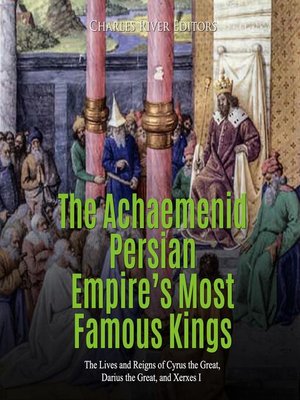

These were soon joined by Mesopotamians, Phoenicians, and later by Egyptians, destined to carry out the imperial program as an image of the king’s power over a diversified and peaceful empire. Soon after his conquest of Lydia and the Ionian cities in 547 B.C.E., Cyrus the Great decided to have their artists and artisans work at Pasargadae, his capital. After Alexander, more or less faithful local imitations of Greek forms and subjects were also produced, responding to the demands of Greco-Macedonians settled in Persia and their descendants, and especially the more or less Hellenized local elites.Īchaemenian period. 145-48Ī.The influx of elements of Greek art into Persia during the Achaemenid period was primarily the result of the importation of artists and artisans from Hellenized Asia Minor and rarely due to a direct supply of objects.

Stronach, “Apadana,” Encyclopædia Iranica, II/2, pp. John Curtis, The world of Achaemenid Persia: history, art and society in Iran and the ancient Near East: proceedings of a conference at the British Museum, 29th September-1st October 2005 (London: I. John Curtis, Nigel Tallis, and Béatrice André-Salvini, Forgotten Empire: The World of Ancient Persia (Berkeley : University of California Press, 2005). John Boardman, Persia and the West: an archaeological investigation of the genesis of Achaemenid art (New York: Thames & Hudson, 2000). Persepolis from the Oriental Institute, University of Chicago In any case, the Apādana, both as a building and as an ideological tableau, make clear and strong statements about the authority of the Persian king and present a visually unified idea of the immense Achaemenid empire.

who were tasked with creating the Ionic frieze of the Parthenon in Athens. These processional scenes may have exerted influence beyond the Persian sphere, as some scholars have discussed the possibility that Persian relief sculpture from Persepolis may have influenced Athenian sculptors of the fifth century B.C.E. The motif of subjugated peoples contributing their wealth to the empire’s central authority serves to visually cement this political dominance. The relief program of the Apādana serves to reinforce and underscore the power of the Persian king and the breadth of his dominion. \( \newcommand\): An Armenian tribute bearer carrying a metal vessel with Homa (griffin) handles, relief from the eastern stairs of the Apādana in Persepolis (Fars, Iran), c.


 0 kommentar(er)
0 kommentar(er)
